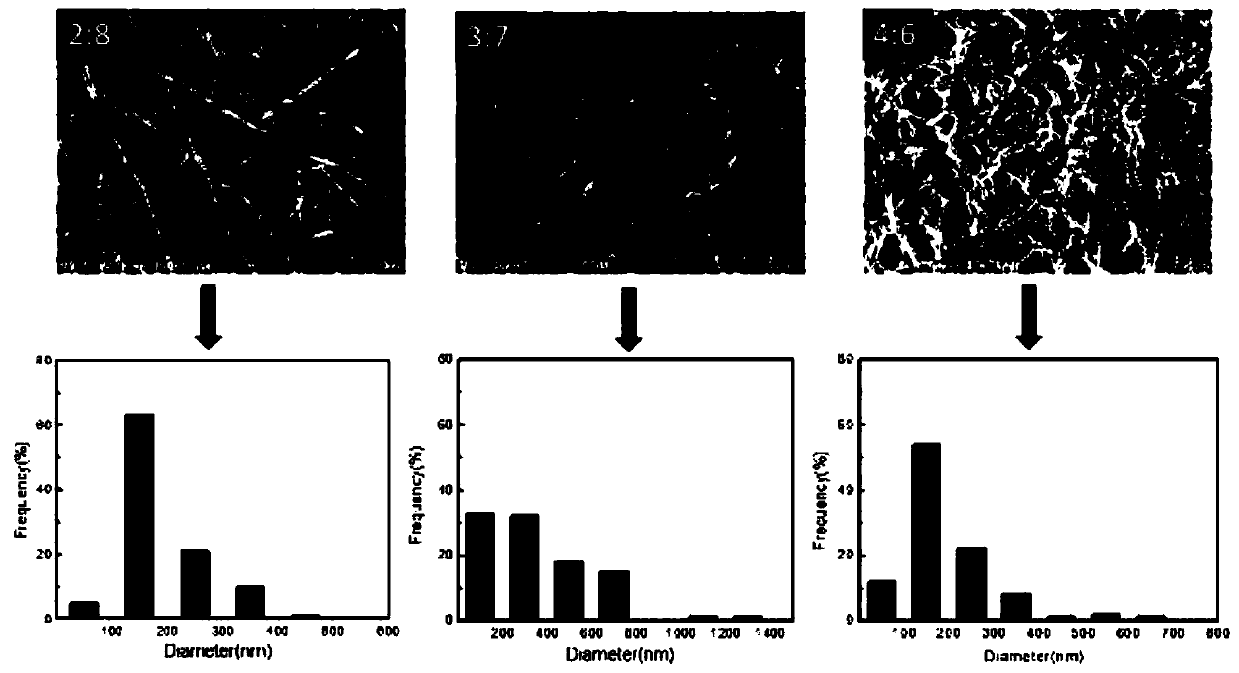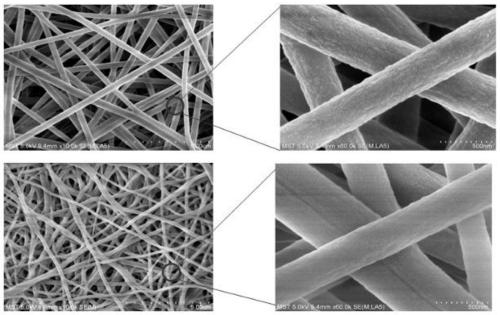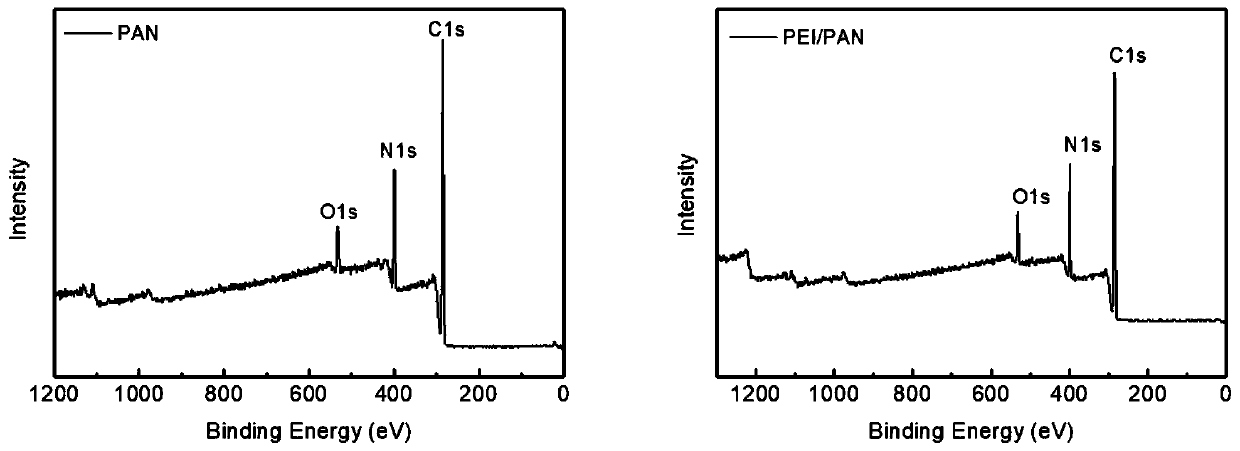Nanofiltration membrane, preparation method and dye separation method
A nanofiltration membrane and separation layer technology, applied in the field of membrane separation, can solve the problems of high molecular weight cut-off, low membrane strength, and low flux of nanofiltration membranes, and achieve good separation performance, good stability, and performance improvement.
- Summary
- Abstract
- Description
- Claims
- Application Information
AI Technical Summary
Problems solved by technology
Method used
Image
Examples
Embodiment 1
[0056] The detailed preparation method of the double-layer structure nanofibrous membrane is as follows.
[0057] First, polyacrylonitrile (PAN) was dissolved in N,N-dimethylformamide (DMF) at 60° C. for 12 hours, and left to stand for 12 hours to defoam. A homogeneous solution with a mass fraction of 10 wt % was obtained as a PAN spinning solution.
[0058] Secondly, mix polyethyleneimine (PEI) and polyacrylonitrile (PAN) in DMF at a certain ratio (fixed total weight is 10wt%) at 60°C for 12 hours until it becomes a homogeneous solution, and stand for 12 hours for defoaming , Prepare transition layer as PEI / PAN spinning solution.
[0059] 10 mL of the prepared PAN spinning solution was electrospun onto aluminum foil. Optimized voltage (20 kV), flow rate (1.0 ml / min) and distance between the needle tip and the collector (14 cm) to obtain a polyacrylonitrile electrospun base film (named PAN base film in the following examples) .
[0060] Then, 5 ml of the prepared PAN / PEI s...
PUM
| Property | Measurement | Unit |
|---|---|---|
| Viscosity | aaaaa | aaaaa |
| Tensile strength | aaaaa | aaaaa |
| Tensile strength | aaaaa | aaaaa |
Abstract
Description
Claims
Application Information
 Login to View More
Login to View More - R&D
- Intellectual Property
- Life Sciences
- Materials
- Tech Scout
- Unparalleled Data Quality
- Higher Quality Content
- 60% Fewer Hallucinations
Browse by: Latest US Patents, China's latest patents, Technical Efficacy Thesaurus, Application Domain, Technology Topic, Popular Technical Reports.
© 2025 PatSnap. All rights reserved.Legal|Privacy policy|Modern Slavery Act Transparency Statement|Sitemap|About US| Contact US: help@patsnap.com



